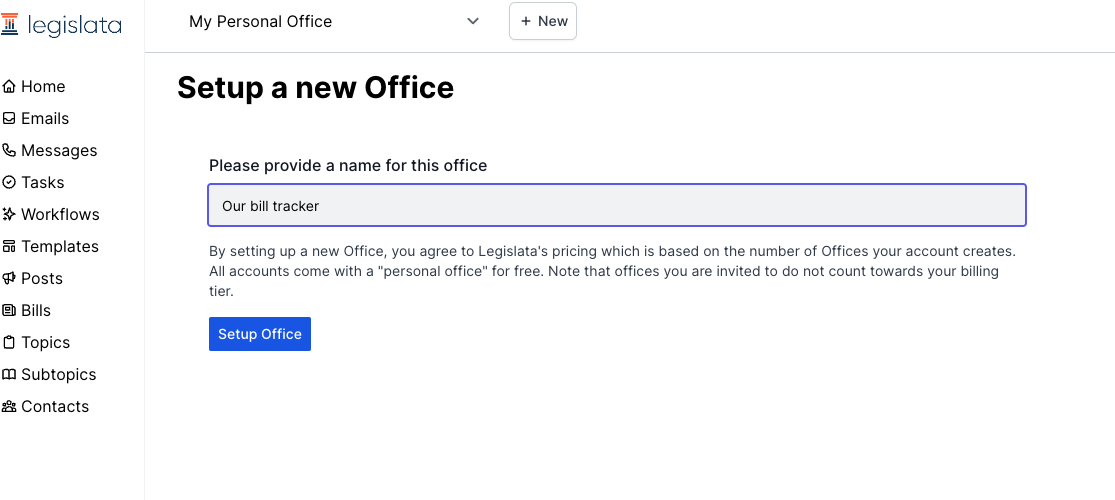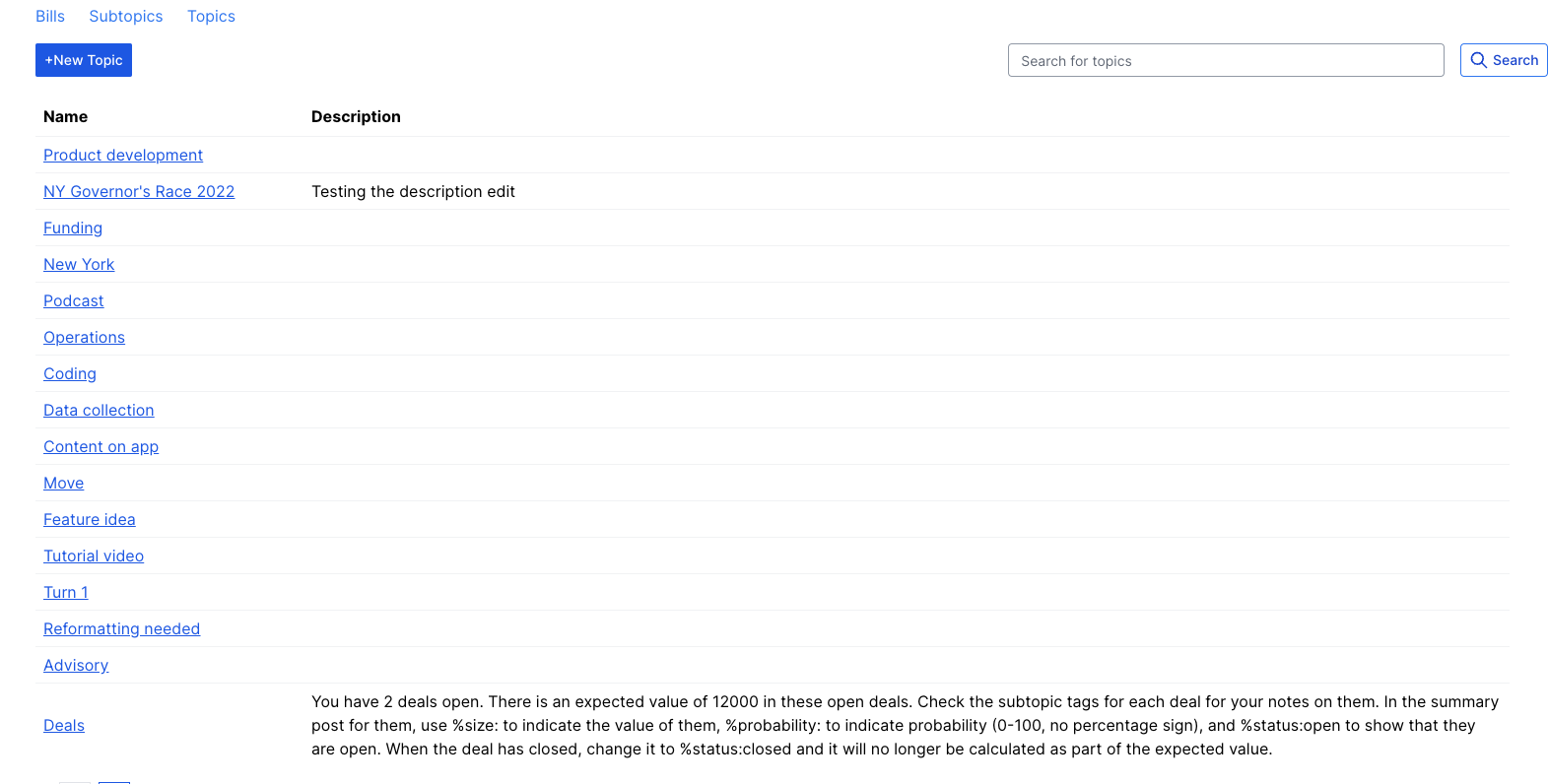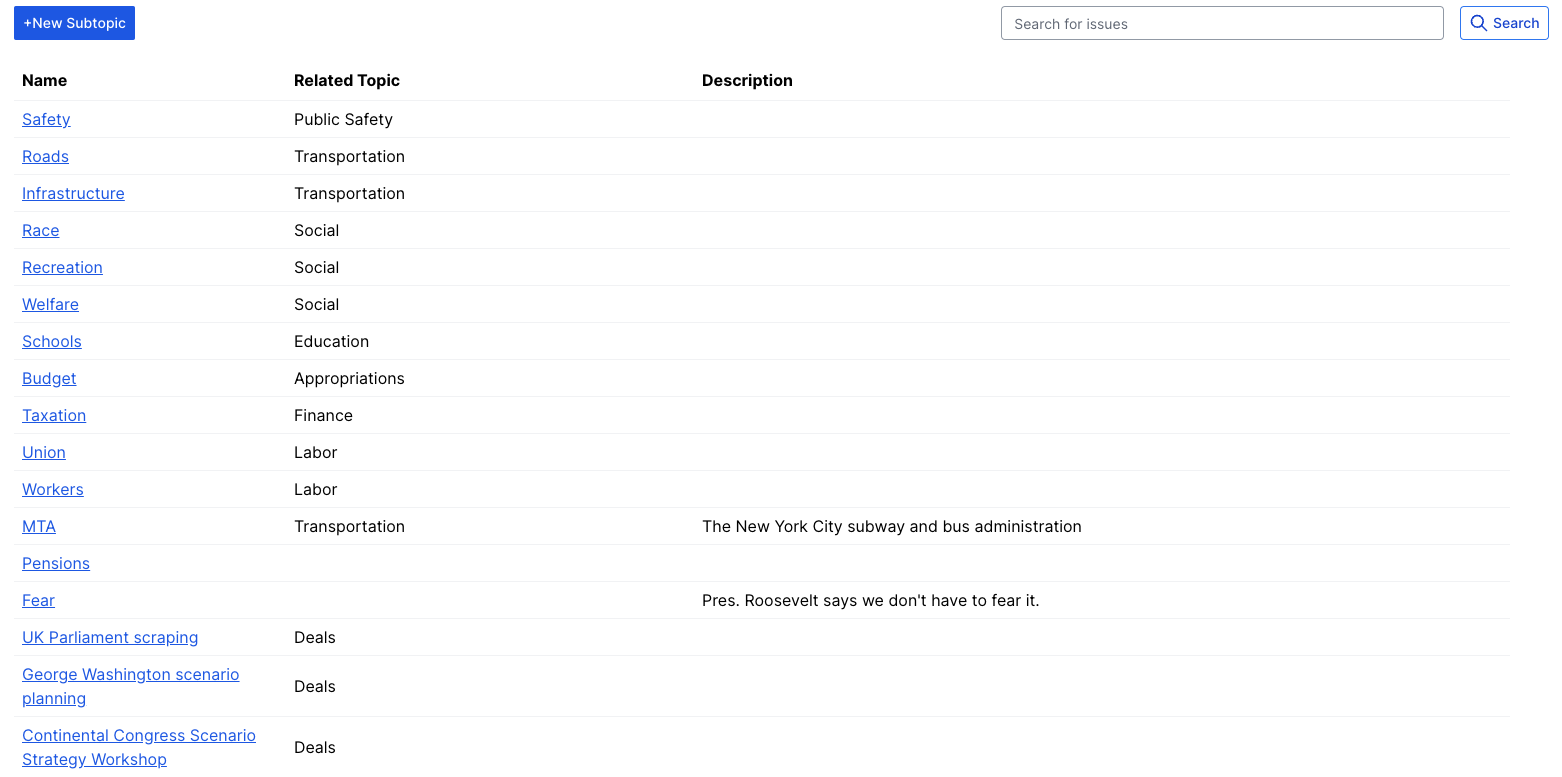How to use our Deals tracker bot to stay visible on your pipeline value
The philosophy behind Legislata is that, when it comes to working in policy, there is no one size that fits all, even within the same organization. You can join different communities, create new ones, and upgrade them to include premium features like task management and even an email client.
As part of this approach, we’re building bots. These are mini-apps that can do a specific function for you within Legislata without requiring you to upgrade the overall tier of your workspace. They’re simple to add - all you need to do is add the right topic tag and the system will do the rest for you.
Here is how you can use one of the first bots, the Deals tracker bot, to keep track of your open deals and see what your expected pipeline value is. It’s ideally suited for those in government affairs who don’t need a full sales CRM but want to have more than a cumbersome spreadsheet.
What is does
The Deals tracker bot allows you to create new deals simply through adding tags to a post and then adding the relevant details in the body of the post. We’ll handle the calculations and have daily summaries of the expected value in the description of your topic tag.
Using this bot will cost $5 per user per month (with a one month free trial). No credit card needed - just create the topic tag along with the steps below and we’ll be in touch with the invoice after the trial month is ending.
How to use it - Step by Step
The Constituent Case bot can be set up within a few minutes and no coding necessary. Here’s what you’ll do.
Step 1: Identify or create the Office you want cross-posted into
The bot will summarize all deals in a specific workspace for you, so first you’ll choose what that workspace is. It can be your personal office, which you’re given automatically when you sign up, or one that you create once you’re in the app to which you can invite other members.
Step 2: Add “Deals” as a topic
The summarizer will look for posts with the topic tag “Deals”, so you’ll have to create that as a topic tag. You can do that by creating a new topic in the topics page or by adding it as a topic on your first post about a deal. Don’t worry about the description. The bot will fill that in later.
Step 3: Create a subtopic for each new deal
When a new case happens, you’ll make a new subtopic for it, with constituent case as the related topic. This will be done with the blue +New Subtopic button in the subtopics page. This lets the bot know that posts with this topic are ones that we’ll be tracking.
Step 4: Create your introductory post about the deal
When a new deal emerges, you’ll of course want to take some notes about it. When you do that, all you need to add is a few bits of text to tell us what to know about it. You can add:
%status:open to tell the bot that this is an open deal
%size:xxxxxx to tell us the size of the deal (in numbers - no commas or decimals)
%probability:0-100 to tell us the probability.
You can add other topics and contacts to this post to help remember those people are connected to this deal and you can also add as much or as little of the description as you’d like. The bot only needs the deal’s subtopic tag and the text in the body that says something like “%status:open %size:10000 %probability:75” to keep track of it for you.
Step 5: Add other posts as needed throughout the deal
As the deal progresses, you may want to add more notes for this. It’s as simple as creating a new note and tagging it with the correct deal as a subtopic tag. You’ll automatically get a feed of those notes when you go into that deal tag.
If you’re responsible for a particular deal, you can also set up a notification for that subtopic tag and be alerted when someone else in your office works on it.
Step 6: Close the deal when it’s done
When the deal has been won or lost, go back to the original introductory post and change %status:open to %status:closed-won or %status:closed-lost. All the posts will still be saved, but it will no longer be part of your daily summary stats. Your workflow is clear and you’re ready to move onto the next one.
That’s it!
It’s that simple to create your own deal value tracker without ever having to type a single number into a spreadsheet or buy sales software. Let us know how else we can help and what other bots we can build that can make working in democracy just a little bit easier.






